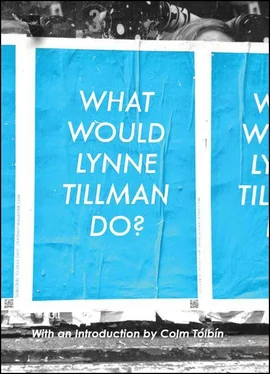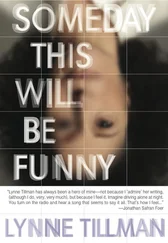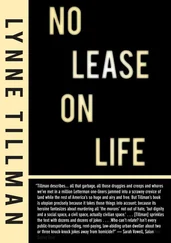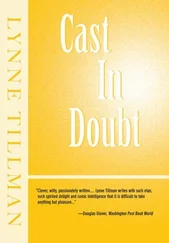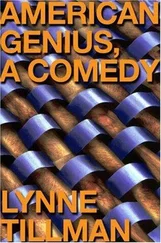S is for Gertrude Stein and George Saunders
Who’s Afraid of Gertrude Stein?
Approaching Gertrude Stein’s writing critically is tricky. She strove to reshape literary conventions — syntax, language usage, narrative order and the sense of making sense — so any comment on Stein’s choices may already be rebuffed or unsettled in her poetics and practice. Actually, Stein is tricky, even a trickster. This may be why, as I read IDA and Stanzas in Meditation , both reissued in corrected, authoritative editions from Yale University Press, I remembered John Cale’s singing, “Nobody ever called Pablo Picasso an asshole.”
Gertrude Stein is called a genius, and through that brilliant lens her writing gets read or is not read, since awe and reverence are regularly met by dismissal and ridicule. Curiously, other writers are called geniuses, but the term doesn’t suffocate the reception of their writing as much. Obviously, readers know the extraordinary reputations of Shakespeare and Virginia Woolf, but some prefer Shakespeare’s Richard III to Richard II or Woolf’s Mrs. Dalloway to Orlando . They feel at liberty to discriminate.
Fewer readers imagine they can create their own Stein; many feel she is beyond their capacity to understand. Maybe this happened because she has been claimed as the sine qua non of the avant-garde. But she aligned herself with her time. Being part of the “contemporary composition” is at the heart of Stein’s trenchant essay, originally a lecture, “Composition as Explanation.” “The only thing that is different from one time to another is what is seen and what is seen depends upon how everybody is doing everything.” Stein inscribed novelty and surprise, through her special prose, to explain their appearance generation to generation and theorized why the new in art and writing may first be thought “ugly,” then later “beautiful” or “classic.” In that same essay, she declared: “No one is ahead of his time.” A future artist, Andy Warhol, said, “I’m part of my time, like rockets and television.” Uncannily, both Stein and Warhol occupy ambivalent places in American culture. They’re adored and also big jokes, both recognized even if only for a single utterance. Stein: “A rose is a rose is a rose is a rose.” Warhol: “In the future everyone will be famous for 15 minutes.” But people have called Warhol an asshole.
“For Stein,” Peter Nicholls writes in his important book, Modernisms: A Literary Guide , “language is to be grasped not as a means of reference to a world of objects which can be dominated, but as a medium of consciousness.” Stein’s works of consciousness depend on a reader’s consciousness, and unconscious-ness, to engage them. Otherwise, her writing is flat, dead, the rhythms and her play with words, her biting wit and clarity, lost.
IDA: A Novel was published by Random House in 1941, but excerpts appeared from 1937. The Yale reissue contains reviews from the day and versions from Stein’s notebooks, showing the novel’s development during those years. Its editor, Logan Esdale, has written an excellent introduction (and notes throughout) containing necessary biographical and textual information. One learns that fame was much on Stein’s mind when writing IDA , her own and Wallis Simpson’s, the American divorcee who became the Duchess of Windsor. Stein’s new fame rested on The Autobiography of Alice B. Toklas , published in America in 1933. The book became very popular and gained Stein a wide readership and celebrity. With the onset of fame, Stein questioned how her work would be received because of it.
Stein constructs a cubist portrait or skewed biography of Ida, who was born with a twin, Ida-Ida, to kind parents. “It was a nice family but they did easily lose each other. her parents went off on a trip and never came back. That was the first funny thing that happened to Ida.” Odd, sad and happy events populate IDA ’s pages, while doppelgängers lurk everywhere: Ida becomes Winnie, because she’s winning; characters like parents to Ida come and go, and men who may, or do, become her husbands appear, disappear, reappear. Ida herself leaves and returns, she’s often going to another state (a place or state of mind). A reader experiences the pull of freedom, and Ida’s contradictory desires — wanting a home, needing to escape; wanting to be known and not. Her identity is in doubt and it’s not.
With these radical changes, there’s a bounty of tension and release. Words appear and reappear — like her husbands — but syntactically differently, scrambling meaning and Ida too. There’s psychological and logistical weight on Ida: whom does she know; what does she know; which dog has died, and where will she live, with whom. Most urgently, who knows her and what does that knowing do.
Ida sat on. She said to herself. If a great many people were here and they all said hello Ida, I would not stand up, they would all stand up. If everybody offered me everything I would not refuse anything because everything is mine without my asking for it or refusing it .
There isn’t a better description of celebrity affect.
Release from textual and narrative tension comes, in part, through Stein’s remarkable voice, as well as internal and external rhymes, some so childlike one might be listening to a book read aloud. “Well what did Ida do. / Ida knew just who was who. / She did. She did know. There are so many men. What do you call them there. They did not know Ida. / Now then.” Also, Ida frequently rests, and “when anybody needed Ida Ida was resting. That was all right, that is the way Ida was needed.” I read the word “rest” again and again, and had a weird sensation. The story would sort of stop, and a space opens up where I could disappear like Ida, or stop too. Also, it provides a rest, as in music.
IDA wanders from its theses in its second half. Interrupted by allusions to, and fragments of other texts Stein had written before or during the writing of IDA , such as “Superstitions,” the novel turns into a repository of fleeting images and ideas that protagonist Ida might hold. Something feels missing and amiss, much as Ida bemoans and muses on missing. “Everybody began to miss something and it was not a kiss, you bet your life it was not a kiss that anybody began to miss. And yet perhaps it was.” I love the insertion of “You bet your life.” My own insertion was Ida became a pronoun and verb: I da won’t, I da will, I da wanna.
Stanzas in Meditation fulfills Stein’s great ambition. It’s an amazing work, a modernist epic, and Stein is at her playful, philosophical, poetic best. It’s a lively, imaginative work, riffing off Tennyson, Shakespeare’s sonnets, nursery rhymes, the cultural gamut. Joan Retallack’s rich introduction, “On Not Not Reading Stein: Pressures and Pleasures of the Text,” reckons creatively and helpfully with the problem I’ll call “Who’s Afraid of Gertrude Stein?” Retallack also presents Stein scholar Ulla Dydo’s important textual discovery: Stein’s lover/wife, Alice B. Toklas, forced her to change the verb “may” to “can.” May Bookstaver was Gertrude Stein’s first lover, and Toklas was enraged finding her name so many times in the manuscript of Stanzas in Meditation . (Apparently, Toklas had no trouble reading Stein.) In the new Yale edition, “may” has been returned, according to Stein’s original manuscripts. The Stanzas’ editors, Suzannah Hollister and Emily Setina, literary sleuths, have done significant work restoring it.
Gertrude Stein suggested that becoming a classic could kill a work of art. I enjoy Gertrude Stein most as a theorist, her ideas startle me, in whatever form they appear. (I call myself an inexpert.) Readers’ responses should shift, like Ida, with changing times, to make a book new(er), otherwise it doesn’t truly live in the present. If Stein becomes an endpoint for literary invention — a classic — her work can’t be read in the present tense. I figure that if Gertrude Stein were alive now, she’d be rambunctious differently. Literature can’t stop, and can’t rest on its laurels.
Читать дальше
